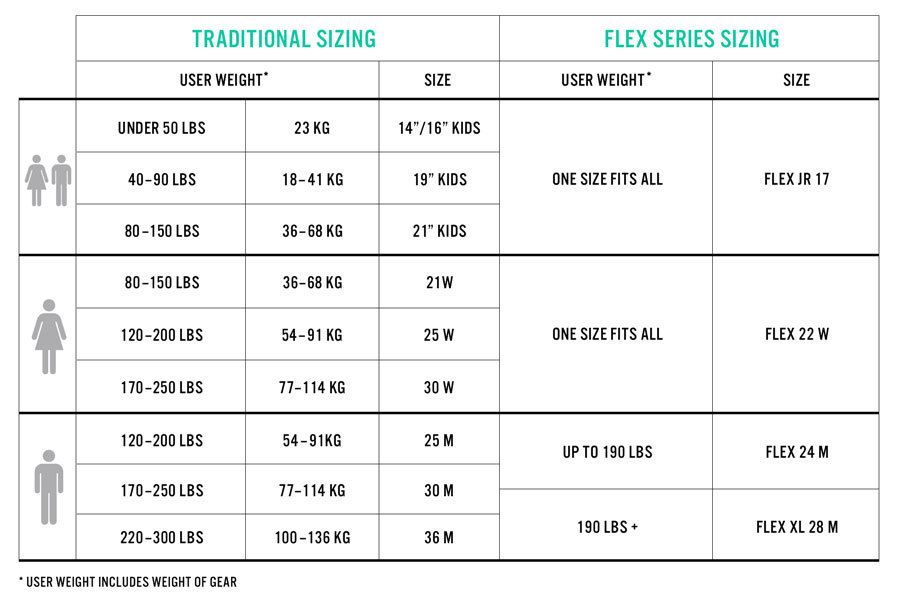Selecting Your Snowhoe
There are a number of important factors which come into play when choosing a snowshoe, including:
Snow Conditions
Tubbs Snowshoes recommended loads are based on light, dry snow conditions. Powder snow may require a larger snowshoe.
Terrain
What will you be doing on your snowshoes? What will the terrain be like? Answering these questions will help you determine how much performance you require and what features you will need.
Backcountry
"Backcountry snowshoeing means breaking trail to a destination of your choosing. You're not following tracks and you're relying on your ability to route plan and navigate. This could be a single day or multi-day trip." - Ambassador John Soltys
For example, if you will be doing a lot of climbing, you will want aggressive traction and ActiveLift Heel Lift.
Day Hiking
"I think of Day Hiking as involving a light pack with food, water, first aid and emergency overnight gear. Still hills, ridges and lake crossings. It may also involve more established trails." - Ambassador Tim Taylor
Trail Walking
"I think of trail walking as more level terrain, for example a rail trail. I think it's a good way for beginners or less confident winter folks to get comfortable on their snowshoes." - Ambassador Sheila Goss
Traction
Forged from carbon steel, all of our snowshoes have the strength to grip icy and slippery conditions.
Whether snowshoeing in the backwoods or exploring steep pitches above 10,000 feet, we've got a specific traction setup just for your. The effectiveness of Tubbs traction is maximized by strategically placing heel and toe crampons under the weighted regions of the snowshoe deck, ensuring that with each stride, the crampons deliver the deepest penetration in the snow.
User Weight
*User Weight refers to the total weight of the user plus anything they are carrying, such as a pack, equipment, etc. Each product page has a more specific sizing chart to determine which size will work best for you.
